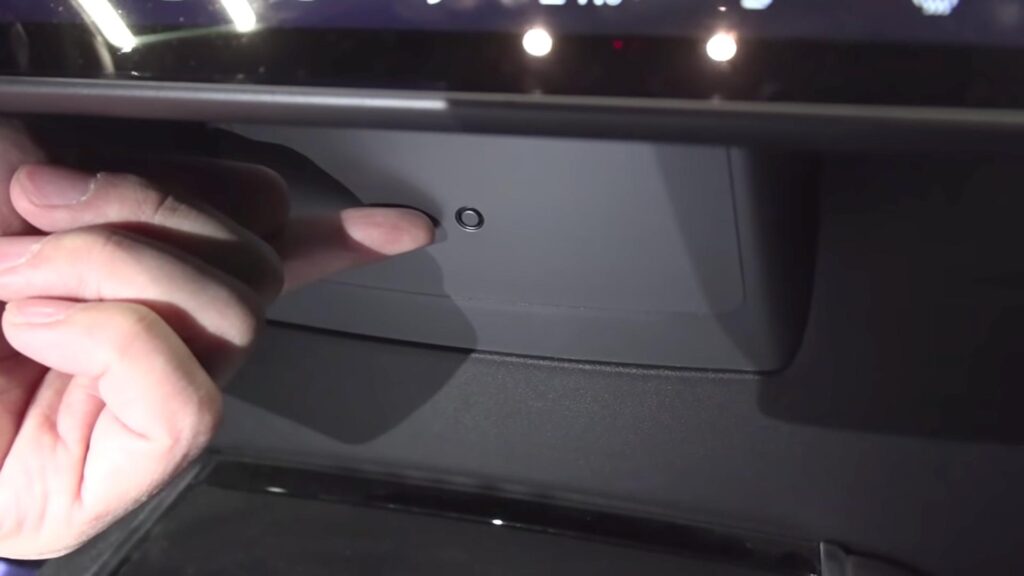Longtime Tesla owner, enthusiast, and EV evangelist Bjorn Nyland has discovered that his previous generation Tesla Model 3 (before 2021) has been plagued with an over-heated footwell issue. The footwell temperature elevates up to 50 ℃ (122 ℉ ) as the HVAC system tries to warm up the car interior during a drive or pre-conditioning the cabin before taking the car for a drive in cold weather.
Bjorn checked both the 2021 Tesla Model 3 and the slightly older Model 3 which can be called the previous generation or pre-design-refresh versions (2017 – 2020).
When Bjorn scanned the temperature of the pre-conditioned cabin of the 2021 Model 3 with a thermal imaging camera, 31.7 ℃ (89 ℉ ) was the max and ~28 ℃ (82.4 ℉ ) was the average temperature at the footwell area.
With the older version of the Tesla Model 3 he owns, the temperature of the footwell reached as high as 50 ℃ (122 ℉ ) — this is too hot for the feet. He did this test when the outside temperature was -11 ℃ (12.2 ℉ ), so manually stopping the footwell air blower would make the area too cold during the drive.
According to Bjorn, several other Model 3 owners of the previous generation are facing this issue. Several owners on Reddit and YouTube have confirmed that they are having the extremely hot Model 3 footwell issue.
Possible Fix

Bjorn also knows about an owner who went to a Tesla Service Center and he was able to get this issue fixed. According to that owner, the Tesla Service team changed the faulty temperature sensor that is located under the center touchscreen (see image above).
Tesla should be able to fix the temperature sensors with its Mobile Service rangers or fix the cars with short turnaround time at the service centers, shouldn’t be a big deal installing new and better temperature sensors.
During the Q4 2020 Earnings Call, Tesla President of Automotive Jerome Guillen said that the electric car maker is working hard on improving the after-sales service. This year, the service appointment time will be further reduced and the overall customer experience will be enhanced, he emphasized.



Heat is always drawn to points my suggestion would be to extend downward from the floorboard toward the underside of the car allowing air to flow around the rods or yes rods and I would cook them with a silver oxide since silver conducts heat best. Or thinking except further possibly coat spikes with a positively charged ion for winter months for negative ions will be readily available and a negatively charged ion on some spikes for summer months where it’s hotter. The plate could also double as an electrostatic charge collector which can be stored in the capacitor and discharge the spark out and use for a number of different applications including removing static from the carpet
Nicola Tesla proposed in explanation of one of his radiant energy patents that he was able to control the temperature of an entire room and the lighting passively simply by releasing this type of energy field. He describes it as an effervescent feeling beneficial to health and that is yet to be proven but I am working hard on it
My placing small air inlet scoops under the car using Bernoulli’s principle of Venturi drawing small amounts of water vapor they could be also used in aging heat dissipation and possibly helping to humidify the cabin in aired weather by use of design of a small heat transfer pumping system that would be passive in nature
I know in frying pens at least modern ones they use a monolithic varying metal construction to help rapidly dissipate heat cooling quickly to the touch I believe it’s stainless and aluminum this monolithic structure could have a high volume of small spiked surfaces intermeshing with one another. A perfect capacitor Bank plated of course dielectric airgel perhaps which could double as a resiliency type mechanical mount to aid in noise reduction and absorption of water evaporation from the humans within the cabin it would be absorbed much like a desiccant increasing the capacitors q.
Thanks for the great technical insight Daniel.